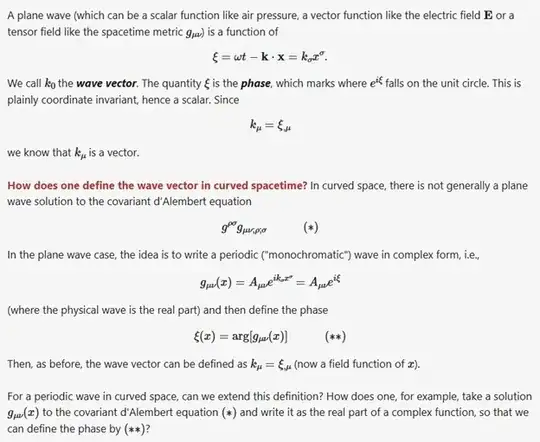For a plane wave $f(x)=A\cos(\omega t-{\bf{k\cdot x}})$, the wave $4$-vector in special relativity is $$k^\mu=(\omega,{\bf{k}}) .$$
This is a $4$-vector in special relativity, as can be seen by checking how it transforms under a Lorentz transformation. Alternatively, the phase $\xi=\omega t-{\bf{k\cdot x}}=k_\mu x^\mu$ is plainly coordinate invariant, hence a scalar; therefore, by the quotient theorem for tensors (see Dirac's "General Theory of Relativity", Chap. 4), $k_\mu$ is a vector, since $x^\mu$ is a vector in special relativity.
Obviously, $x^\mu$ is not a vector in curved space. Therefore, I am guessing that neither is the wave vector $k_\mu$?
